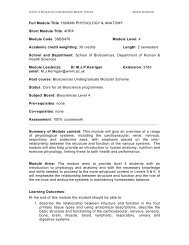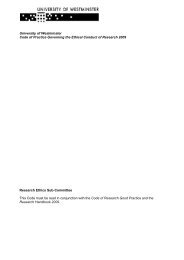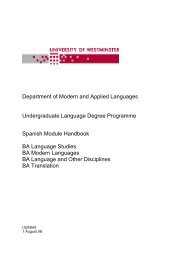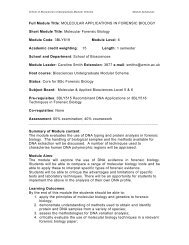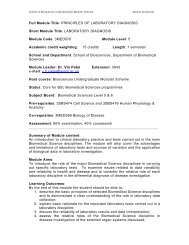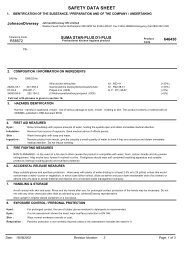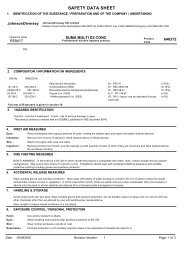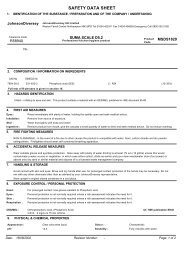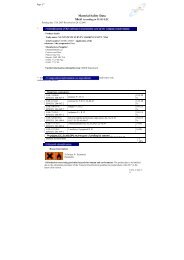CONTENTS 1. Introduction 1.1 Course Outline 1 1.2 Introduction ...
CONTENTS 1. Introduction 1.1 Course Outline 1 1.2 Introduction ...
CONTENTS 1. Introduction 1.1 Course Outline 1 1.2 Introduction ...
Create successful ePaper yourself
Turn your PDF publications into a flip-book with our unique Google optimized e-Paper software.
Full Module Title:<br />
DIGITAL IMAGE PROCESSING<br />
Short Module Title: DIGITAL IMAGE PROCESSING<br />
Module Code: 2DPI604 Module Level: 6<br />
Academic credit weighting: 15<br />
Length: 1 semester<br />
School:<br />
Media, Art and Design<br />
Department:<br />
Photographic and Digital Media<br />
Module Leader(s): Liz Allen Extension:4083 e.mail:allene@wmin.ac.uk<br />
Host <strong>Course</strong>:<br />
BSc (Hons) Photography and Digital Imaging<br />
Status:<br />
Option<br />
Pre-requisites:<br />
None<br />
Co-requisites:<br />
None<br />
Assessment: Written Examination 40%<br />
<strong>Course</strong> work 20%<br />
Written Reports from practical assignments 40%<br />
Summary of Module content: Digital Image Processing<br />
The aim of the module is to provide a higher-level understanding of digital image processing and<br />
manipulation techniques and their application. Image enhancement, image restoration, image<br />
segmentation, image analysis, compression, frequency space processing, transformations,<br />
computer vision, image recognition.<br />
Module Aims:<br />
• To gain an understanding of the main classes of digital image processing and<br />
manipulation techniques and their application.<br />
• To extend earlier study of digital imaging systems and the management of image data in<br />
alternative representations.<br />
• To provide students with self-directed and focused practical work, to allow them to gain<br />
experience in the use of image processing to solve specific problems.<br />
• To gain knowledge of practical application of image processing algorithms using MATLAB.<br />
•<br />
Learning Outcomes:<br />
<strong>1.</strong> Be aware of the scope of digital imaging.<br />
2. Understand the main applications and classes of image processing techniques and their<br />
advantages and limitations.<br />
3. Be proficient in the use of MATLAB to write programs for the implementation and testing<br />
of image processing algorithms.<br />
4. Be familiar with methods of image enhancement and restoration in both real and Fourier<br />
spaces.<br />
5. Demonstrate knowledge of fundamental techniques and approaches used in image<br />
segmentation and analysis.<br />
6. Understand and apply image compression correctly to preserve data integrity.<br />
7. Use terminology related to the field correctly.<br />
8. Select appropriate image processing or manipulation algorithms for specific tasks and<br />
understand the relevant implementations.<br />
DPI_Hbook 89 ©University of Westminster





